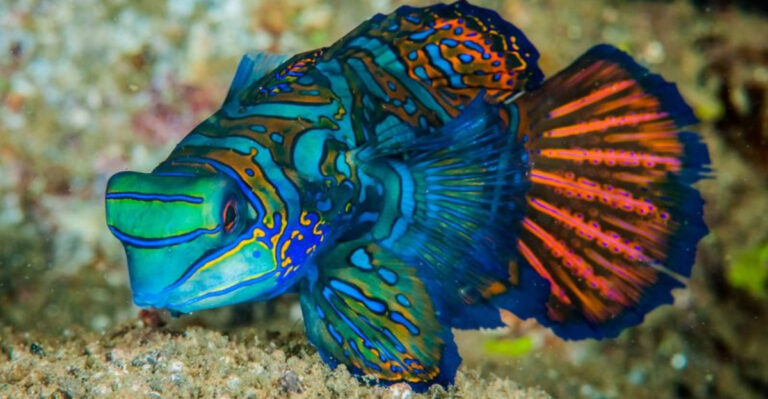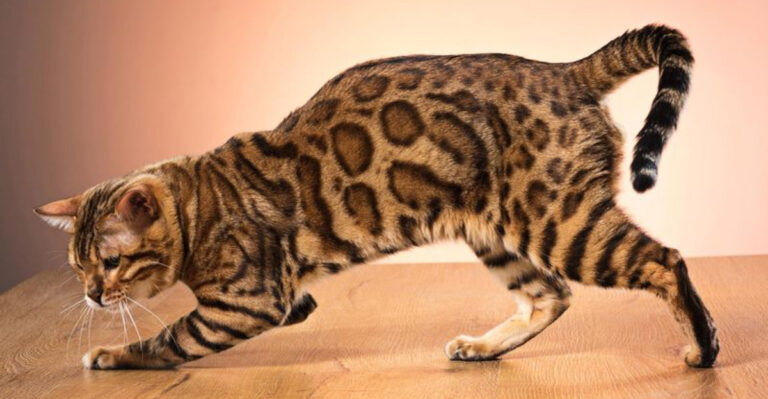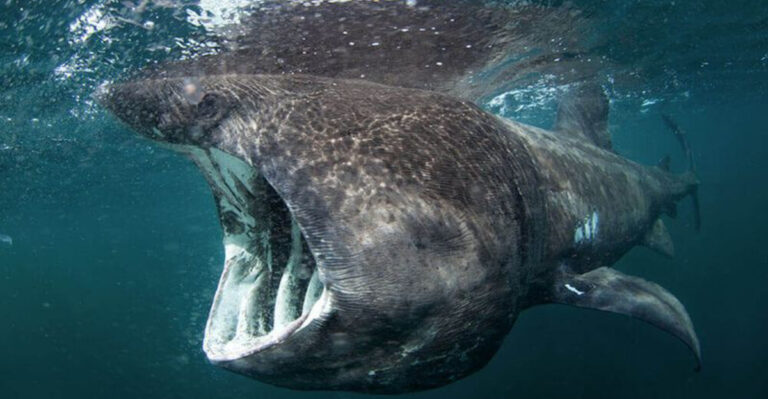What Are The 10 Differences Between A Hawk And A Falcon?

Exploring the avian world, hawks and falcons stand out with their unique characteristics and behaviors. Though often confused due to their predatory nature and sharp features, these birds of prey possess distinct differences that set them apart.
This article delves into ten fascinating contrasts between hawks and falcons, offering insights into their physical attributes, hunting techniques, habitats, and more. Join us as we unravel the intriguing disparities that make each species uniquely adapted to its environment and lifestyle.
1. Size And Build
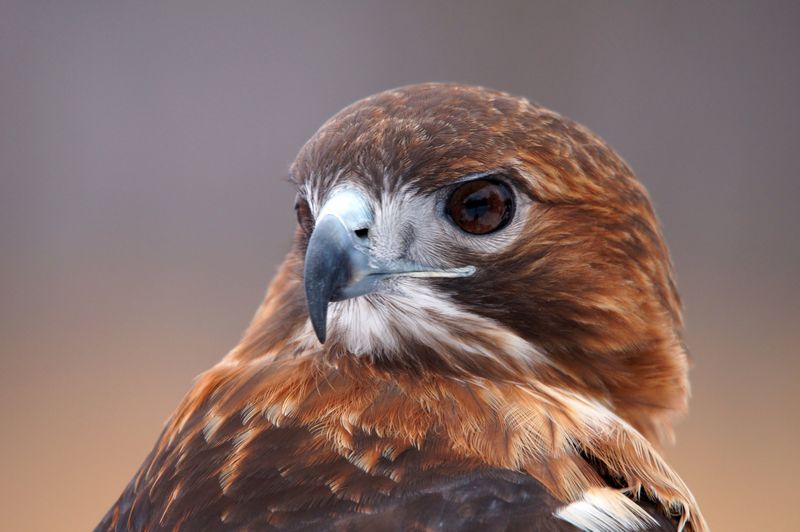
Hawks are generally larger and more robust than falcons, showcasing a stockier build that aids in their diverse hunting strategies. With broad wings and a shorter tail, hawks are built for maneuverability, able to navigate through dense forests and varied terrains. This physical structure supports their ability to ambush prey from a perch, using the element of surprise.
On the other hand, falcons are known for their sleek and aerodynamic bodies, designed for high-speed pursuits in open skies. Their long, pointed wings and tails enable them to dive at incredible speeds, making them formidable aerial hunters. Falcons’ lightweight frames allow for swift, agile movements, ideal for catching prey mid-air.
While hawks rely on strength, falcons depend on speed. These physical differences highlight the unique adaptations each bird has developed to thrive in its respective environment. Observing these characteristics can provide birdwatchers with clues to identify these raptors in the wild.
2. Hunting Techniques
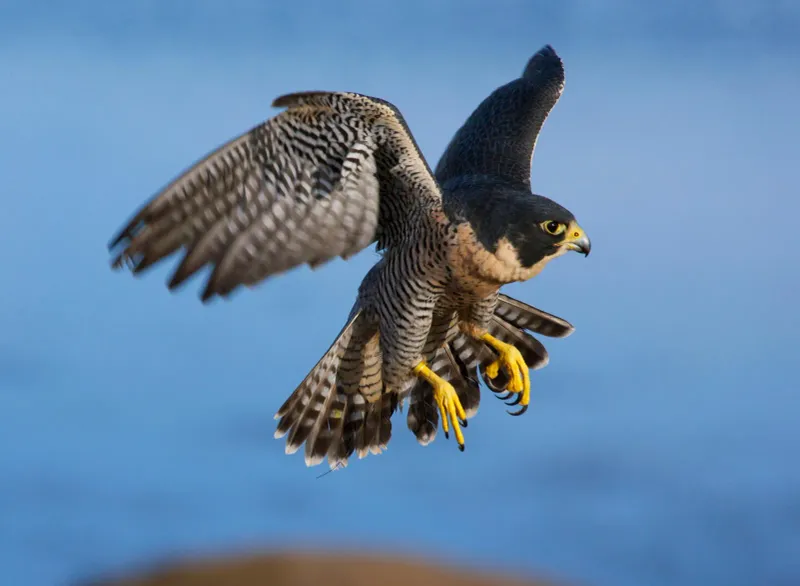
Hawks and falcons employ distinct hunting techniques that reflect their physical adaptations and environmental preferences. Hawks often use their keen eyesight to spot prey from a high perch, then swoop down with precision.
This ambush strategy allows them to catch unsuspecting animals, taking advantage of their powerful build and sharp talons. Conversely, falcons are the masters of speed, utilizing their incredible velocity to outpace and outmaneuver their targets.
They are known for their high-speed dives, called stoops, where they can reach speeds over 200 miles per hour. This technique is effective for capturing birds in flight, showcasing the falcon’s agility and precision.
The contrast in hunting styles between hawks and falcons not only highlights their physical differences but also their adaptation to different ecological niches. Understanding these techniques offers bird enthusiasts a deeper appreciation of each raptor’s specialized skills.
3. Wing Shape
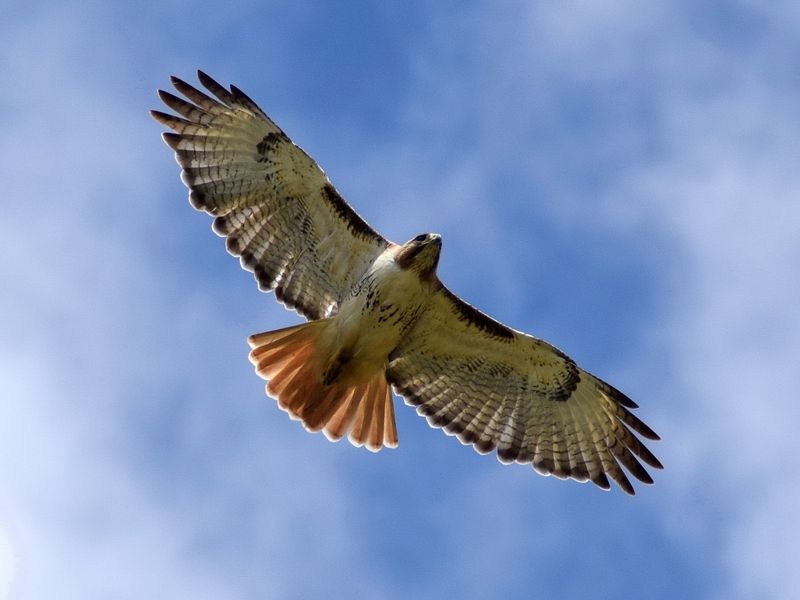
The wing shape of hawks and falcons is one of the most noticeable differences and plays a crucial role in their flight capabilities. Hawks have broad, rounded wings that provide the stability needed for soaring and gliding over forests and open fields.
This wing shape allows them to conserve energy during flight and make quick turns when pursuing prey. In contrast, falcons possess long, pointed wings that are perfectly suited for high-speed chases in the sky. These wings enable falcons to reach incredible speeds and perform agile aerial maneuvers, making them exceptional at pursuing fast-moving prey.
This distinction in wing design between hawks and falcons underscores their evolutionary adaptations to different hunting environments. While hawks prioritize maneuverability and endurance, falcons focus on speed and agility. Bird watchers can often identify these birds in flight by observing the shape and motion of their wings.
4. Beak Structure
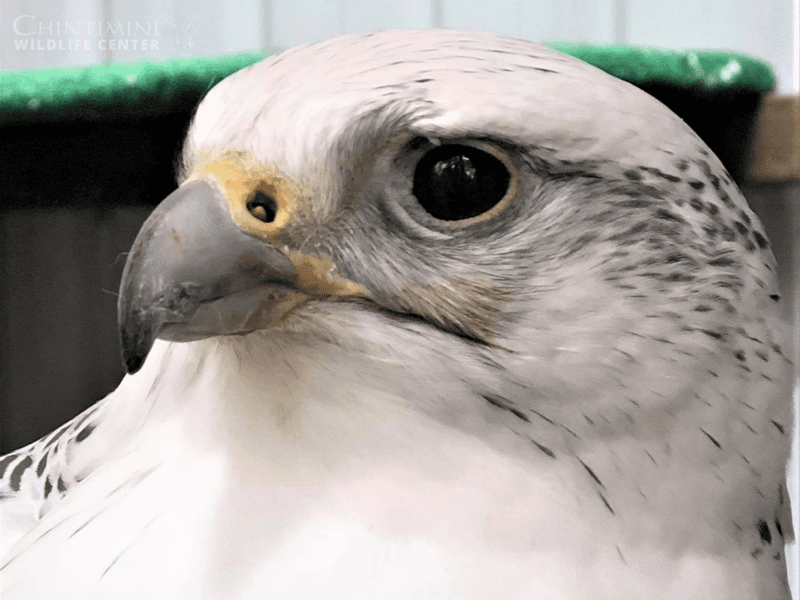
The beak structure of hawks and falcons is another key difference, reflecting their dietary habits and hunting methods. Hawks have a strong, curved beak designed for tearing flesh, which complements their powerful talons.
This formidable beak structure enables hawks to efficiently consume their prey after a successful hunt.
Falcons, however, possess a unique notch on their beak, known as the “tomial tooth.” This adaptation allows them to quickly kill their prey by severing the spinal cord, demonstrating their specialization in hunting birds.
The notched beak is a distinctive feature that sets falcons apart from other raptors. These differences in beak design highlight the evolutionary paths taken by hawks and falcons to optimize their hunting and feeding strategies. Observing these features can provide enthusiasts with further insights into the identification and behavior of these birds.
5. Habitat Preferences
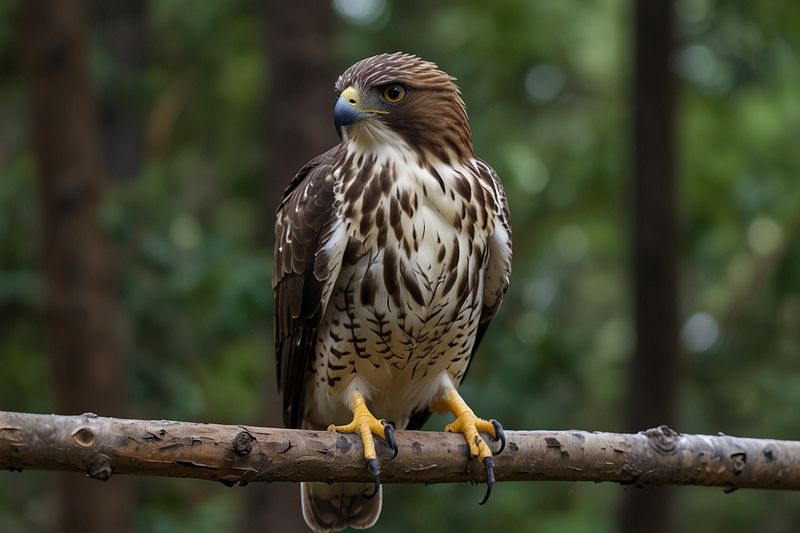
Hawks and falcons choose habitats that best suit their hunting styles and physical adaptations. Hawks are often found in wooded areas or forests, where their broad wings and strong build are advantageous for navigating dense vegetation.
These habitats provide ample perches for them to survey their surroundings and ambush prey. Falcons, in contrast, prefer open environments such as plains, deserts, and coastal regions. Their streamlined bodies and exceptional speed make them well-suited for hunting in these wide-open spaces where they can spot and pursue prey from afar.
The habitat preferences of hawks and falcons reflect their evolutionary adaptations to different ecological niches, allowing them to thrive in varied environments. Bird watchers and nature enthusiasts can often identify these birds by considering the landscape and how it aligns with each species’ preferred hunting grounds.
6. Tail Shape
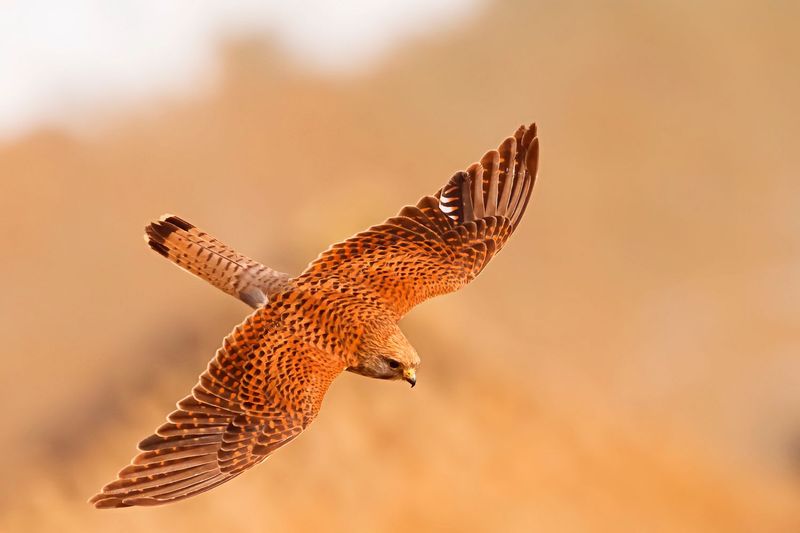
The tail shape of hawks and falcons is an important physical feature that influences their flight dynamics and hunting strategies. Hawks typically have broad, fan-shaped tails that assist in steering and maintaining stability during flight. This tail design allows hawks to maneuver through forests and make sharp turns when chasing prey.
Falcons, on the other hand, have sleek, tapered tails that enhance their aerodynamic efficiency. This tail shape contributes to their ability to achieve high speeds and perform quick, agile movements during aerial pursuits. The streamlined tail of a falcon is a key factor in its prowess as a fast and agile hunter.
By observing the tail shape, bird enthusiasts can often distinguish between these two birds of prey. The differences in tail morphology highlight the unique adaptations hawks and falcons have developed to excel in their respective hunting environments.
7. Vocalizations
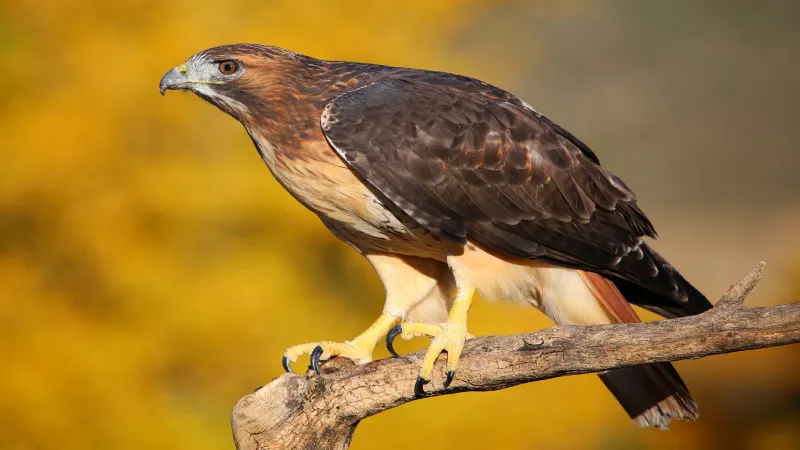
Hawks and falcons exhibit distinct vocalizations that reflect their communication methods and social behaviors. Hawks often produce loud, piercing calls that serve various purposes, such as marking territory or signaling alarm.
Their vocalizations are typically more resonant and can be heard across considerable distances, aiding in their territorial and predatory roles.
In contrast, falcons are known for their rapid, chattering sounds which are often used during hunting or courtship displays. These vocalizations are usually softer and less resonant than those of hawks, but they play a crucial role in the falcons’ social interactions and hunting coordination.
The difference in vocalizations between hawks and falcons provides another layer of distinction for bird watchers and enthusiasts. Listening to these calls can enhance the identification experience, offering insights into the behavior and communication styles of these magnificent raptors.
8. Feeding Habits
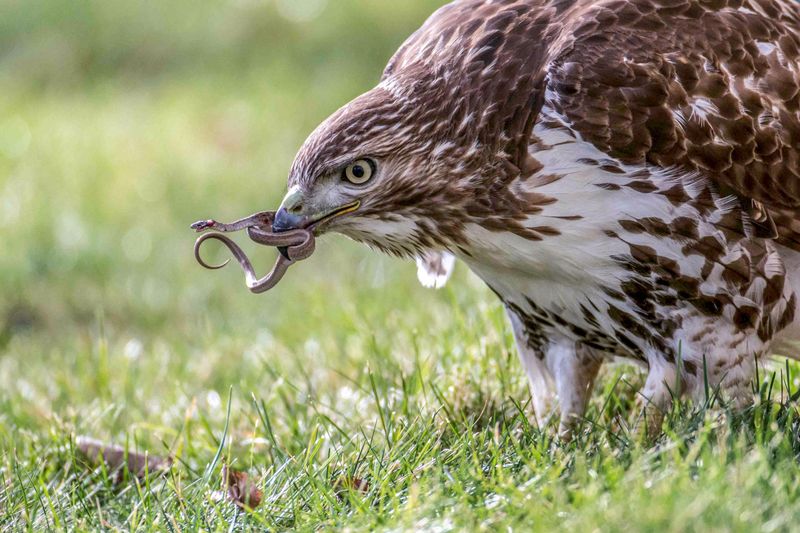
The feeding habits of hawks and falcons reflect their distinct hunting techniques and dietary preferences. Hawks are versatile hunters, often preying on small mammals, birds, and reptiles. Their powerful talons and beaks allow them to capture and consume a variety of prey, making them adaptable to different environments.
Falcons, however, specialize in hunting birds and are known for their impressive aerial pursuits. Their speed and agility enable them to capture avian prey mid-air, demonstrating their specialized hunting prowess. Falcons’ diets are more focused, often revolving around specific bird species available in their habitats.
These differences in feeding habits highlight the ecological roles each bird plays in their respective environments. Understanding these dietary preferences can provide bird enthusiasts with deeper insights into the behavior and ecological impact of hawks and falcons.
9. Breeding And Nesting
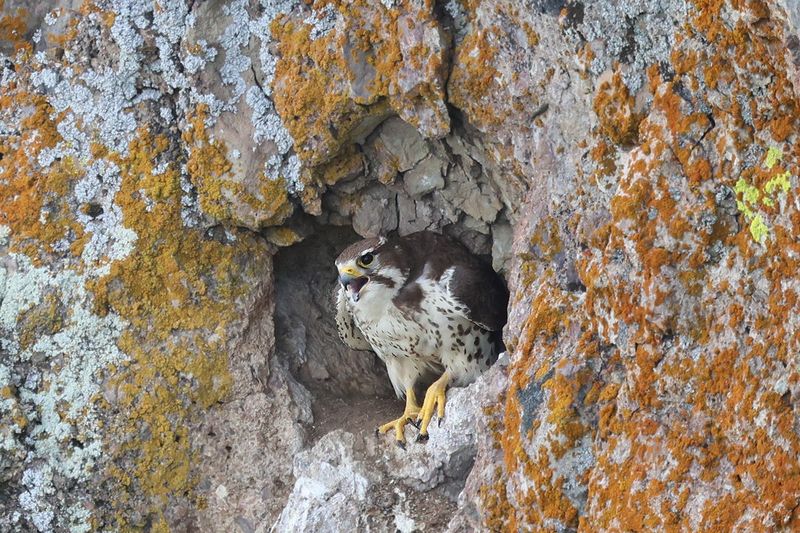
Hawks and falcons have distinct breeding and nesting behaviors that align with their environmental adaptations.
Hawks typically build large nests in tall trees, where they lay eggs and raise their young. These nests are often reused over several years, with both parents participating in the care of the chicks.
Falcons, on the other hand, prefer nesting in high, inaccessible locations such as cliffs or tall structures. They often use scrapes or ledges rather than building traditional nests. Falcons are known for their protective nature, fiercely guarding their nesting sites from potential threats.
The breeding and nesting strategies of hawks and falcons demonstrate their adaptability to different habitats and survival needs. Observing these behaviors can offer bird watchers valuable insights into the reproductive life and family dynamics of these birds of prey.
10. Behavioral Characteristics
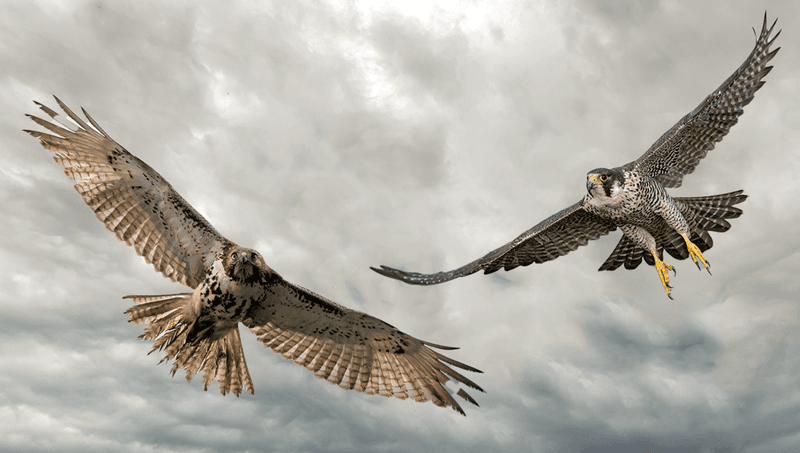
Behavioral characteristics of hawks and falcons provide another area of differentiation that is fascinating to observe. Hawks are generally more solitary and territorial, often seen perching quietly as they survey their surroundings. They exhibit patience and strategic planning in their hunting approach, reflecting their ambush tactics.
Falcons, conversely, are more social and active, frequently seen in flight rather than at rest. Their behavior is characterized by high energy and rapid movements, especially during hunting or courtship displays. Falcons often demonstrate cooperative hunting strategies when in pairs, showcasing their social dynamics.
These behavioral traits highlight the contrasting lifestyles of hawks and falcons. Understanding these patterns can enrich the bird-watching experience, offering insights into the daily life and interactions of these captivating birds.



